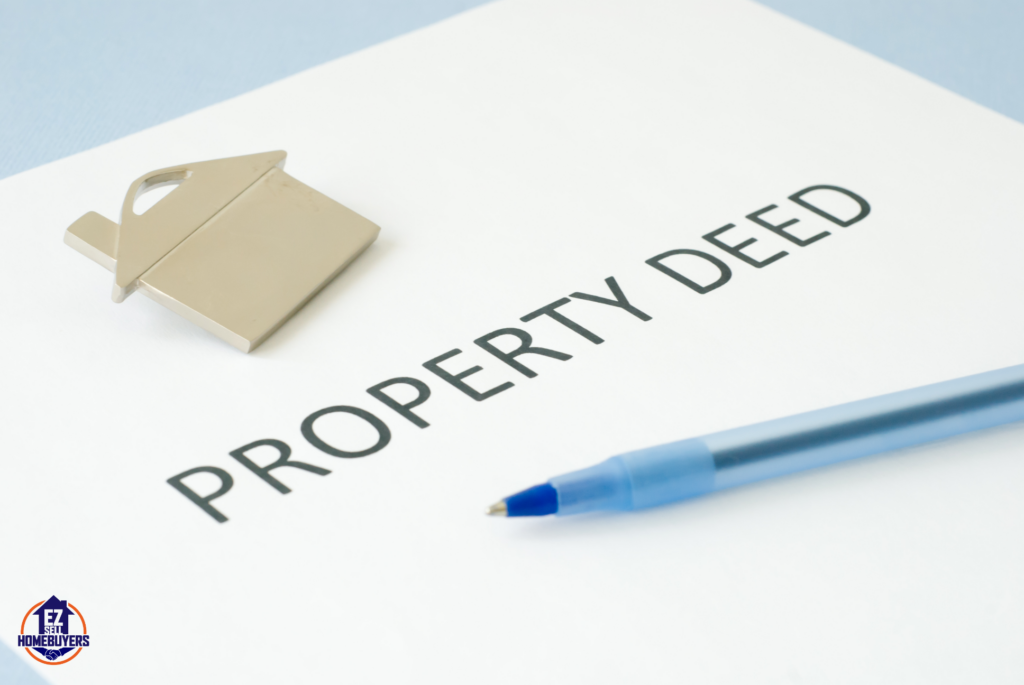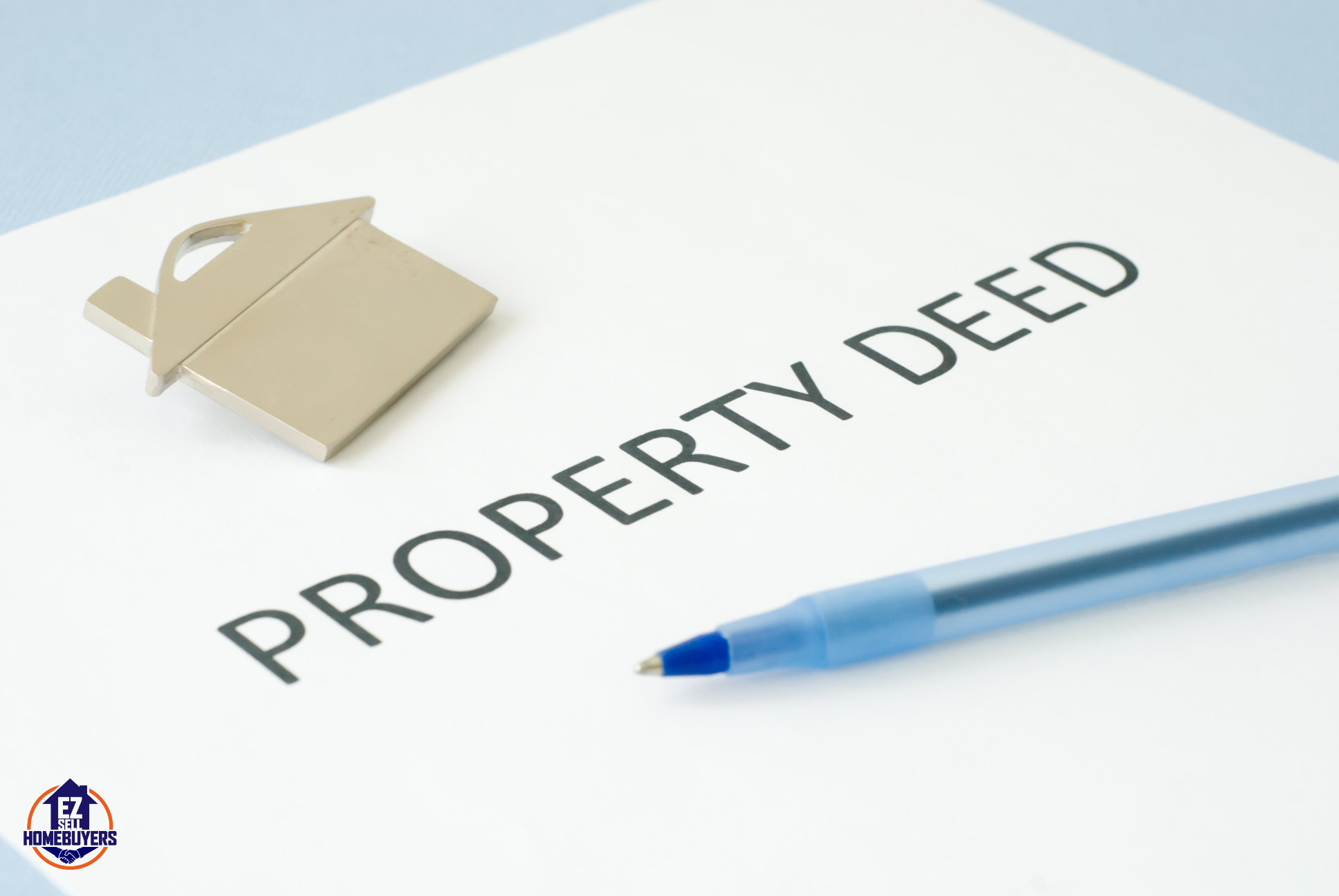Transferring property ownership can be a complex process, especially when you need to remove a person’s name from the deed in 2025. Understanding the legal process for deed change in Ohio is crucial, whether due to divorce, a change in investment strategy, or other personal reasons. As a seasoned real estate investor with over 23 years of experience in Ohio, I have navigated this process many times. This comprehensive guide will walk you through the steps and the types of deeds involved and provide important tips for a smooth transaction, supported by relevant Ohio Revised Code references.

Understanding Deed Transfer in Ohio
In Ohio, a deed is a legal document that outlines property ownership, as specified in Ohio Revised Code Section 5301.01. When you need to remove a person from the deed, you’re essentially changing the ownership details recorded with the county. This process is known as a deed transfer. The primary method for removing someone from a deed in Ohio involves using a quitclaim deed, which is governed by Ohio Revised Code Section 5302.10. Over the years, I have found that understanding these specific legal references ensures clarity and accuracy in the process.
What is a Quitclaim Deed?
A quitclaim deed is a legal instrument used to transfer a property owner’s interest to another party. Unlike a warranty deed, which guarantees a clear title, a quitclaim deed transfers ownership without any warranties. This makes it a popular choice for transactions between familiar parties, such as family members or divorcing spouses, where the title’s history is well-known and trusted.
Steps to Remove a Name from a Deed in Ohio
Here are the steps to follow to remove a person’s name from a deed in Ohio:
- Gather Required Information: Before initiating the process, gather all necessary information, including the current deed, property description, and personal identification for all parties involved. Ensuring you have accurate details helps avoid errors that could invalidate the deed. From my experience, having these documents ready not only speeds up the process but also minimizes potential legal complications.
- Prepare the Quitclaim Deed: You can obtain a quitclaim deed form from a legal stationery store, online legal service, or an attorney. Ensure the form is specific to Ohio, as deed laws vary by state.
- Complete the Quitclaim Deed: Fill out the form with accurate details. This includes the grantor (the person whose name is being removed), the grantee (the person who will retain or receive the property), and the property description. Be meticulous to avoid errors that could invalidate the deed.
- Sign the Deed: The grantor must sign the quitclaim deed in the presence of a notary public. In some cases, the grantee’s signature may also be required. Notarization is crucial for the deed’s legality.
- Record the Deed: Submit the signed and notarized deed to the county recorder’s office where the property is located. There may be a recording fee, which varies by county.
- Update Property Records: Once recorded, the county will update the property records to reflect the change in ownership. Keep a copy of the recorded deed for your records.
Legal Considerations
While the process may seem straightforward, there are several legal considerations to keep in mind:
- Joint Tenancy and Tenancy in Common: If the property is held in joint tenancy, removing a name may sever this arrangement, converting it to tenancy in common. This can affect inheritance and ownership rights.
- Outstanding Mortgages: If the property has an outstanding mortgage, the lender’s approval may be required before changing the deed. The grantor remains liable for the mortgage unless the loan is refinanced.
- Legal Advice: Consulting with a real estate attorney, such as those recommended by the Ohio State Bar Association, can help ensure the deed transfer is handled correctly and in compliance with Ohio laws. Based on my extensive experience, professional legal advice is invaluable, especially for addressing specific nuances in the law and ensuring all paperwork is accurately completed.
Why Use a Quitclaim Deed?
The quitclaim deed is preferred for several reasons:
- Simplicity: It is simpler and faster to execute compared to other types of deeds. From my experience, this makes it particularly useful in straightforward transactions.
- Cost-Effective: Generally, it’s less expensive as it involves fewer legal assurances. This cost-efficiency has been beneficial in many of my property transactions.
- Common Use Cases: Ideal for transferring property between spouses, family members, or into a trust. For instance, in one case, I used a quitclaim deed to transfer property into a family trust seamlessly.
Common Scenarios for Deed Removal
Several scenarios may necessitate removing a person’s name from a deed:
- Divorce: Often, one spouse retains the property, requiring the other’s name to be removed. For example, in one of my transactions, we used a quitclaim deed to ensure a smooth transfer following a divorce settlement.
- Inheritance: An heir may want to remove a deceased relative’s name from the deed. I’ve handled several cases where this was necessary to clear the title for sale or transfer.
- Investment Changes: Changing business partnerships or investment strategies may require updating the property ownership records. In my own experience, updating the deed during a shift in investment strategy helped avoid future legal complications.
Conclusion
Removing a person’s name from a deed in Ohio is a manageable process if you understand the steps and legal implications. Utilizing a quitclaim deed simplifies the procedure, but it’s essential to ensure all details are correct and the deed is properly recorded. By following this guide, you can navigate the Ohio deed removal process with confidence and accuracy.
About the Author
Mike Wall is a real estate investor and agent with over 23 years of experience in the Ohio real estate market. He specializes in property transactions, including deed transfers and real estate law. Mike has successfully handled numerous deed modifications and provides expert advice to homeowners and investors. Learn more about Mike’s expertise on his author page.
FAQ: Removing a Person from the Deed in Ohio
- What is a deed transfer in Ohio?
- A deed transfer in Ohio is the process of changing the ownership details recorded with the county for a property. This involves updating the legal document, or deed, that outlines property ownership.
- What is a quitclaim deed?
- A quitclaim deed is a legal instrument used to transfer a property owner’s interest to another party without any warranties. It is commonly used for transactions between familiar parties, such as family members or divorcing spouses.
- How do I remove a person’s name from a deed in Ohio?
- To remove a person’s name from a deed in Ohio, you need to gather all necessary information, prepare a quitclaim deed, complete the form accurately, have it signed and notarized, and then record it with the county recorder’s office.
- What information do I need to remove a name from a deed?
- You need the current deed, property description, and personal identification for all parties involved. Having accurate details helps avoid errors that could invalidate the deed.
- Do I need a notary public to sign the quitclaim deed?
- Yes, the grantor must sign the quitclaim deed in the presence of a notary public. In some cases, the grantee’s signature may also be required. Notarization is crucial for the deed’s legality.
- What are the legal considerations when removing a name from a deed?
- Legal considerations include understanding the effects on joint tenancy or tenancy in common, obtaining lender approval if there is an outstanding mortgage, and consulting with a real estate attorney to ensure compliance with Ohio laws.
- Why is a quitclaim deed preferred for removing a name from a deed?
- A quitclaim deed is preferred because it is simpler and faster to execute compared to other types of deeds. It is also cost-effective and ideal for transferring property between familiar parties.
- Can I remove a deceased relative’s name from the deed?
- Yes, an heir may need to remove a deceased relative’s name from the deed to clear the title for sale or transfer. This often involves using a quitclaim deed and may require additional legal steps.
- Do I need to update property records after recording the deed?
- Yes, once the deed is recorded, the county will update the property records to reflect the change in ownership. It is important to keep a copy of the recorded deed for your records.
- Is it necessary to consult a real estate attorney for deed transfers?
- While not always required, consulting with a real estate attorney is highly recommended. An attorney can ensure the deed transfer is handled correctly and in compliance with Ohio laws, addressing any specific legal nuances.
- What are some common scenarios for removing a person from a deed?
- Common scenarios include divorce, inheritance, and changes in investment strategies. Each situation may require updating the property ownership records through a quitclaim deed or other legal means.
- Where can I find more information about deed transfers and real estate laws in Ohio?
- For more information, you can visit the Ohio State Bar Association’s website or consult with a real estate attorney experienced in Ohio property laws. Additionally, exploring local county recorder’s office resources can provide specific guidance.

